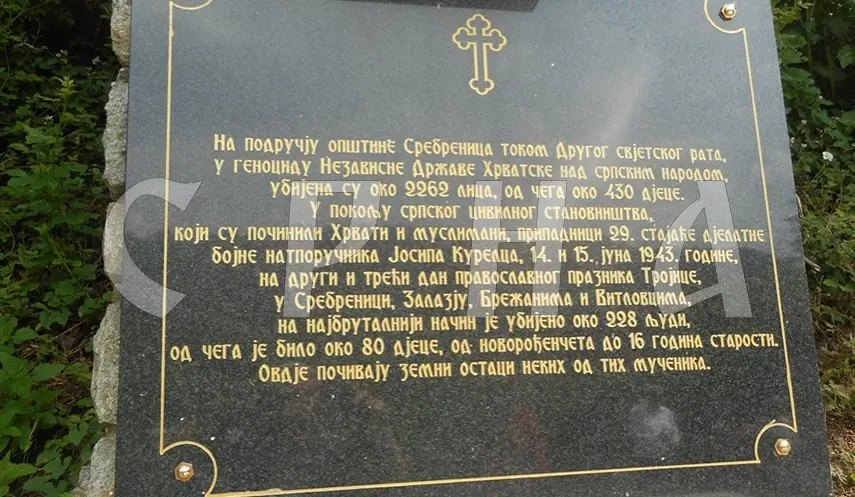82 YEARS SINCE USTASHA'S ATROCITY ON THE FEAST OF THE HOLY TRINITY
Republika Srpska - Srebrenica - culture of remembrance
06/07/2025
12:38

SREBRENICA, JUNE 7 /SRNA/ - A memorial service will be held at the memorial ossuary in Srebrenica, on Monday, June 9, for more than 250 Serbs who were brutally killed by the Ustashas on the second and third day of the Feast of the Holy Trinity in 1943.
The massacre in Srebrenica took place on June 14, 1943, while in the nearby villages of Zalazje and Vitlovci it occurred the following day.
This atrocity was previously described to SRNA by the late Miloš Nikolić, whose grandfather, Jovo, was killed by the Ustashas in his home on the second day of the Feast of Holy Trinity.
He pointed out that the communist authorities concealed the truth and did not disclose the names of the victims of that crime, even though it was well known that the NDH units, which included a large number of local Muslims, monstrously massacred Serbian civilians in their homes.
According to their written documents, Ustashas killed more than 155 Serbian civilians in Srebrenica on that day.
Nikolić testified that, along with them, the family of a Jewish dentist and the family of a Muslim, who was the local court president and married to a Serbian woman, were also killed.
Nikolić’s grandfather, Jovo, together with his daughter-in-law Vasilija and a five-member Jewish family, was murdered in the house where they lived, which still stands as a witness to that crime.
After the crime committed in Srebrenica, another 97 Serbs were killed the next day in the village of Zalazje, including 45 members of the Rakić family, 16 Maksimović family members, and 15 from the Dragičević family.
Documents from the NDH state that Josip Korelec, a Ustasha captain and legionnaire under Francetić, ordered the retaliation after his brother was killed in battles near Srebrenica. He led the massacre that the Ustashas, with the help of local Muslim collaborators, brutally carried out against Serbian civilians.
According to published data, Ustashas killed all the Serbs they found in their homes.
Entire large families such as the Stevanović and Krstić families perished. Five members of the baker Ostoja Stevanović’s family were killed, as well as 15 civilians from the Srebrenica village of Brežani who happened to be in Srebrenica that day.
None of the victims were soldiers; the civilians were massacred in various ways.
After the savage crime committed in Srebrenica, Ustashas carried out a massacre in the Serbian villages of Zalazje and Vitlovci near Srebrenica, where they killed dozens of residents.
Nikolić reminded that during World War II, all Serbian villages in the wider area of the Srebrenica local community of Sućeska vanished, such as Slatina, Lipovac, Žedanjsko, Šušnjari, and several other Serbian hamlets.
After the war, Muslim inhabitants took over and appropriated Serbian properties, and no one was ever brought to justice for the deaths of their owners.
Nikolić pointed out that the communist authorities ignored this crime, labeling the victims as members of the anti-fascist resistance, even though they were Serbian civilians with no connection to any ideology.

DODIK: MOVE TOWARD GOAL WITHOUT HESITATION – SRPSKA MUST RESOLVE ITS STATUS

DODIK: ELECTIONS WILL BE BOYCOTTED, THIS IS NOT REBELLION BUT POLITICAL RESPONSE

DODIK: I WILL REQUEST MOSCOW’S SUPPORT FOR SRPSKA INDEPENDENCE REFERENDUM



